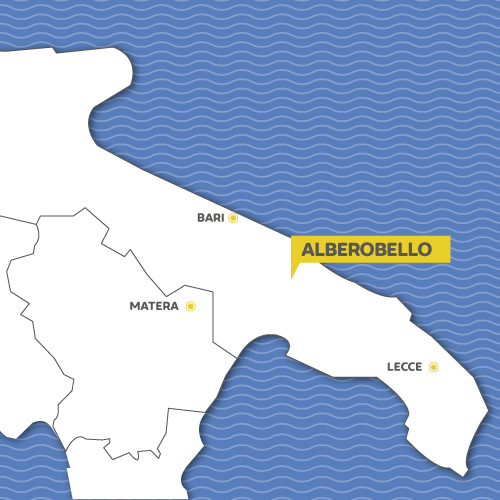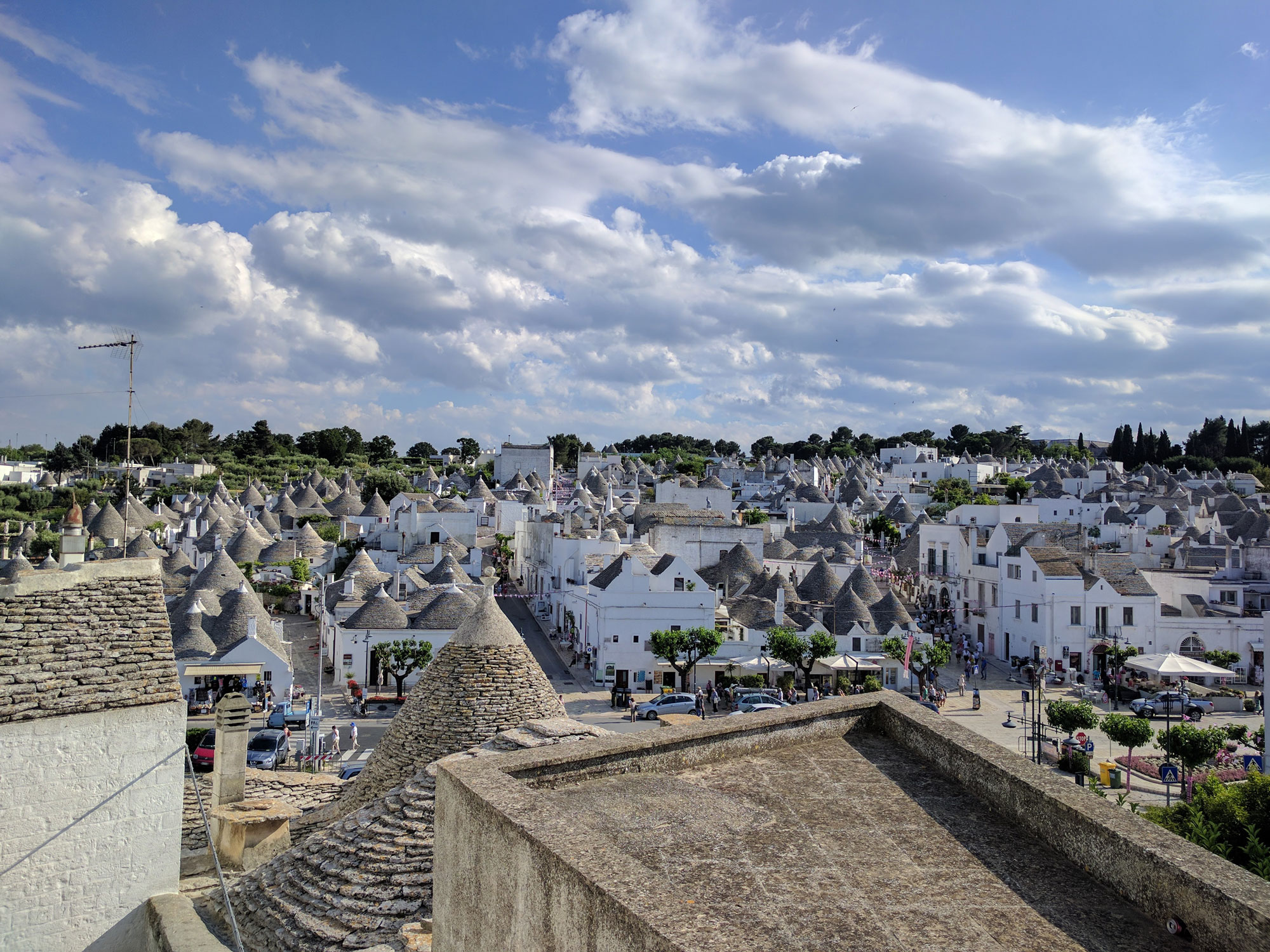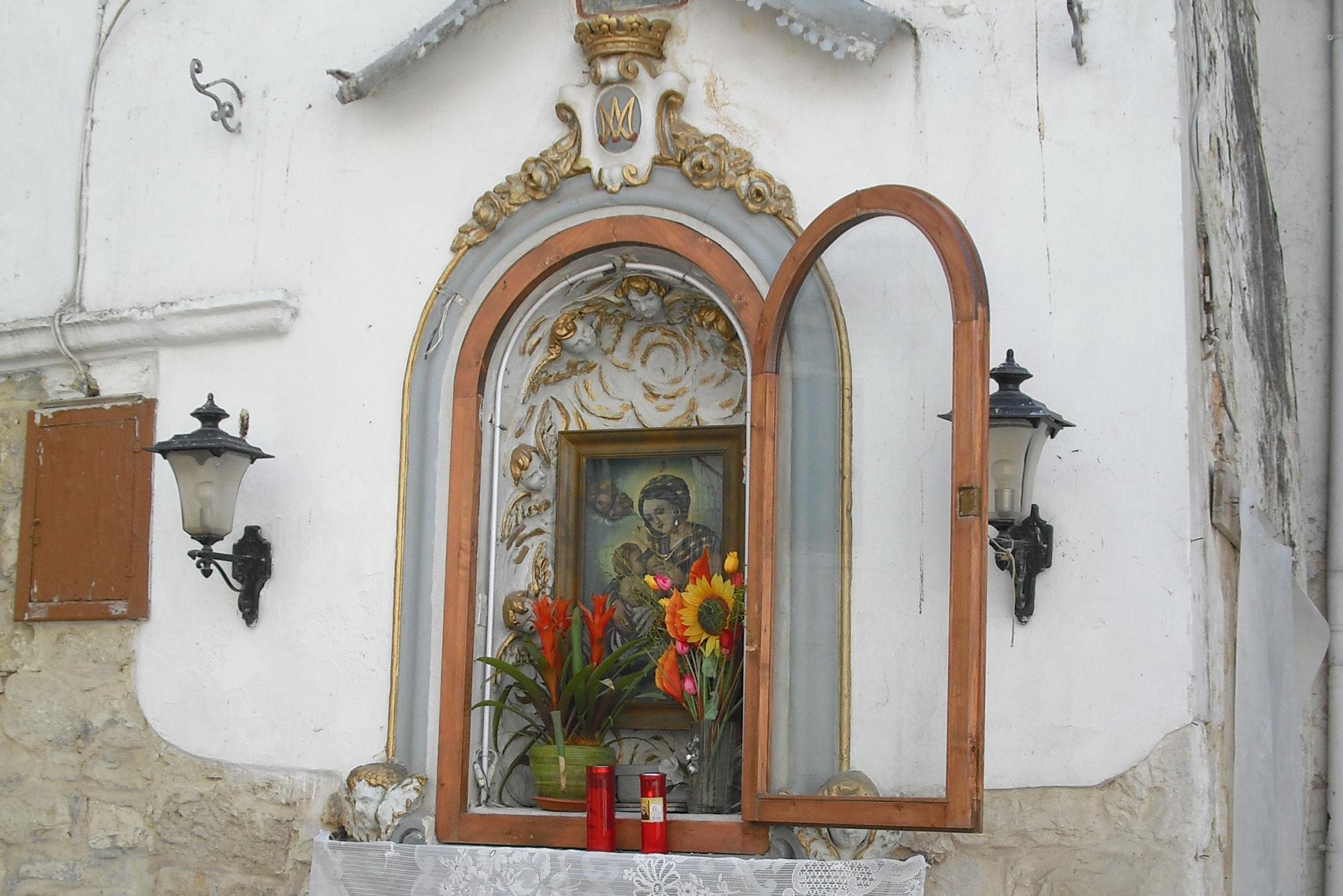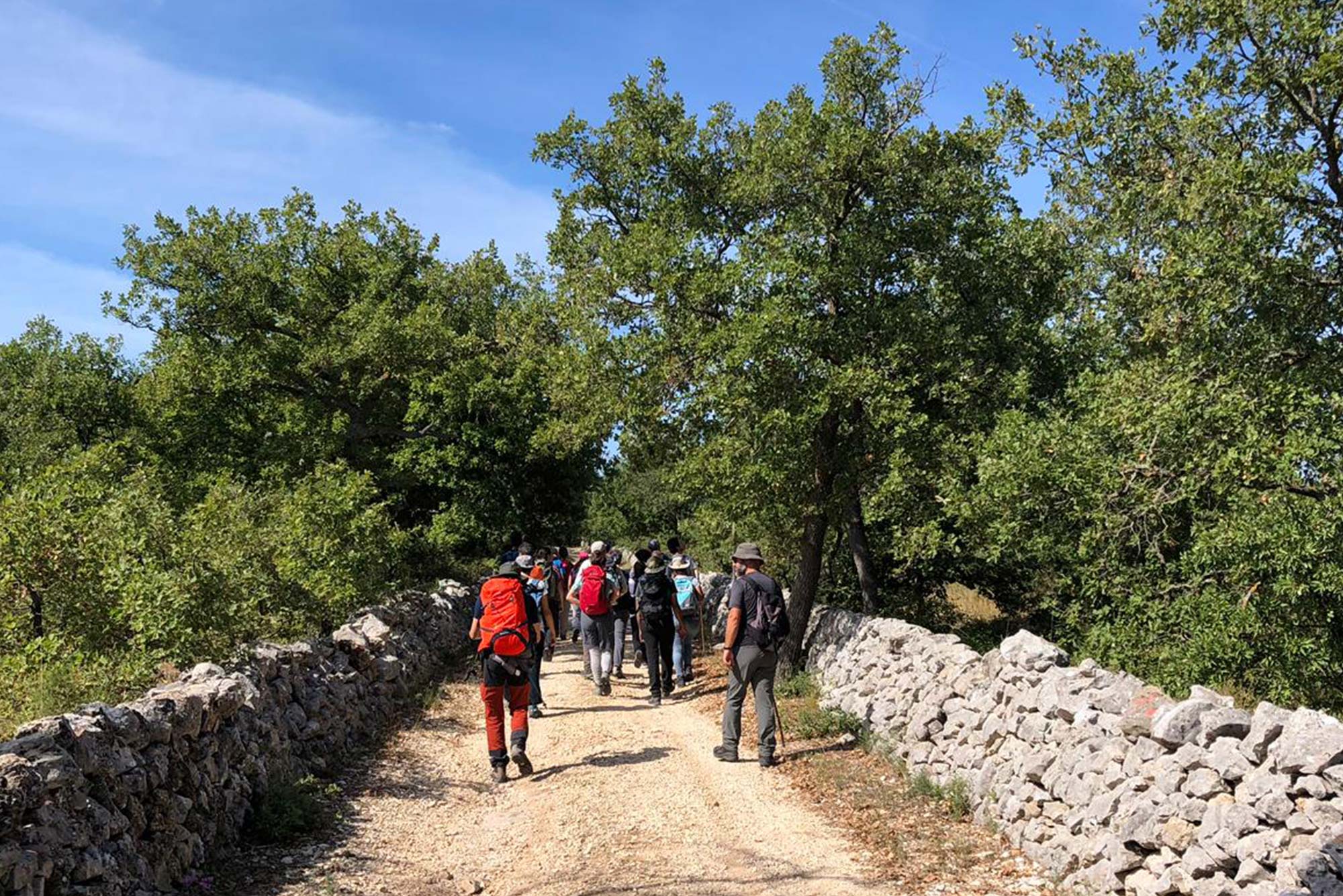Alberobello

An expanse of trulli, traditional drystone huts, gives Alberobello its unique, inimitable skyline, from 1996 a UNESCO World Heritage Site.
In the heart of the Murgia dei Trulli, 31 miles away from Bari, a lovely spread of pinnacles announces Alberobello's characteristic historic centre, a UNESCO World Heritage Site. The old town centre, which has also been awarded the Touring Club of Italy's Orange Flag, is entirely composed of trulli, traditional drystone huts whitened with quicklime and capped by conical bare-stone roofs. Crosses, pierced hearts, and zodiac signs decorate the roofs, maintaining the air of mystery that surrounds the trulli.

The Rione Monti, a maze of narrow winding streets with over 1,000 trulli, is the oldest part of the town, along with the Rione Aia Piccola. This area is home to the Casa Pezzolla, a complex of 15 interconnected trulli that today houses the Museo del Territorio, and the Trullo Sovrano, which stages performances and concerts. Alberobello's churches are even shaped like trulli. The Church of Sant’Antonio boasts a Greek cross plan and a cupola 21 meters high (69 feet). Another church that is worth a visit is the Basilica Minore dei Santi Medici, where you'll find images of the Madonna of Loreto and patron saints Cosma and Damiano.
What to see:
Trullo Sovrano
Chiesa di Sant'Antonio
Santuario dei Santi Medici
What to taste:
Barattiere
Martina o Martina Franca DOC
Terra di Bari DOP
Valle d'Itria IGT

Votive shrines in Puglia
Since ancient times, man has wanted to establish a link with the land that he considers “his” by interpreting unusual events as supernatural signs: the will of God consecrating the bond. And so they arose, crossroads and places in which there were miraculous events or events which were difficult to reconcile with a rational explanation. They began to be considered sacred and distinguished from the modest chapels in which statues were placed. The coming of Christianity saw an introduction of new objects of devotion being placed inside these shrines, like statues of saints, of Mary, mother of Jesus, and of Christ. In line with their origins, the name “edicole” (shrines) derives from the Latin word “aedicula’, which means a small temple, tabernacle, a small sanctuary and, most probably, the shrines already existed in ancient Egypt and Greece. They were repudiated by the first Christians and slowly came back into accepted practice during the Medieval Age.

The Misthery of the devil's Jazzo
Going on vacation in Puglia often means staying in fortified farmhouses adapted for tourism, called masserias. They are found throughout the region, each one with characteristics tied to the unique nature of the specific area in which it is located. They are certainly some of the most prevalent rural buildings in this part of Italy, but they are not the only ones. Entering the region called Murgia, and within the sub-region of Gargano, you can find, together with the masserias, little houses called jazzes.